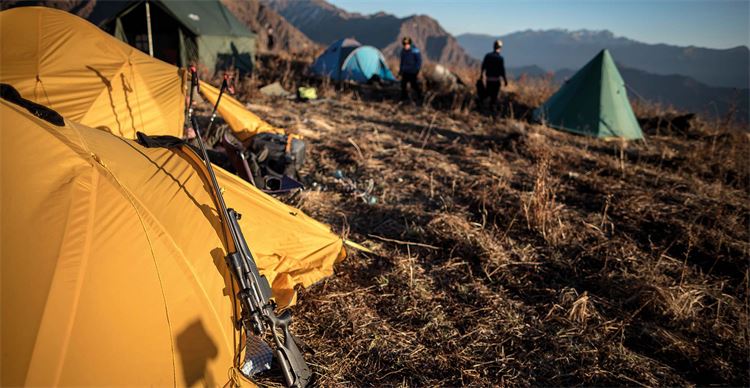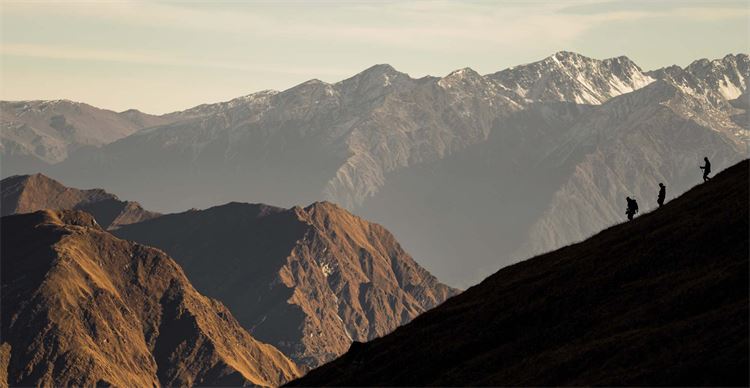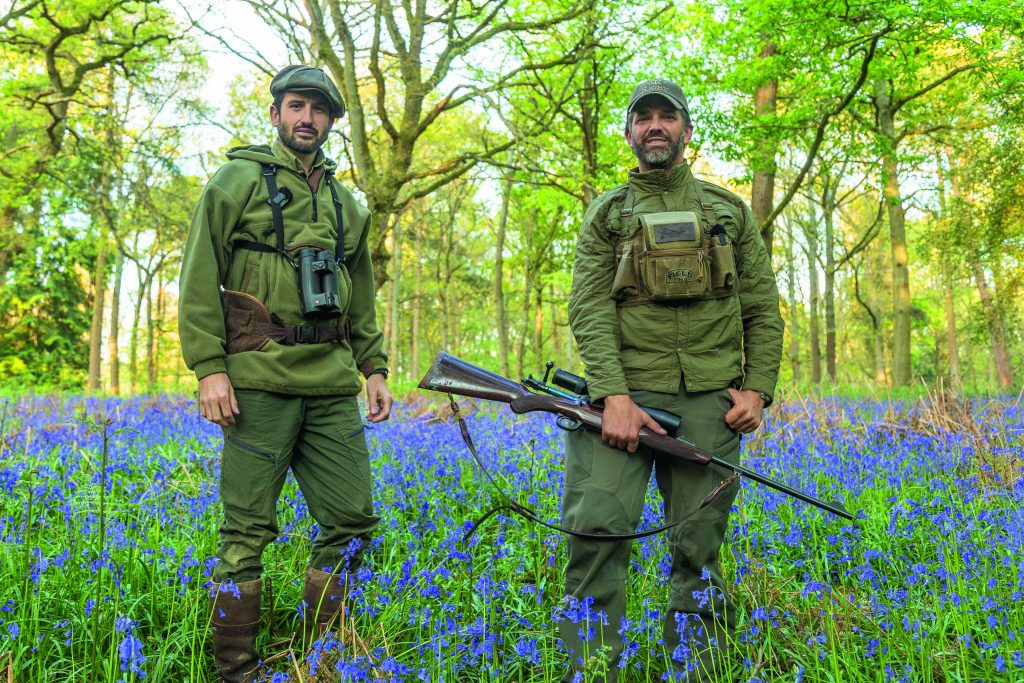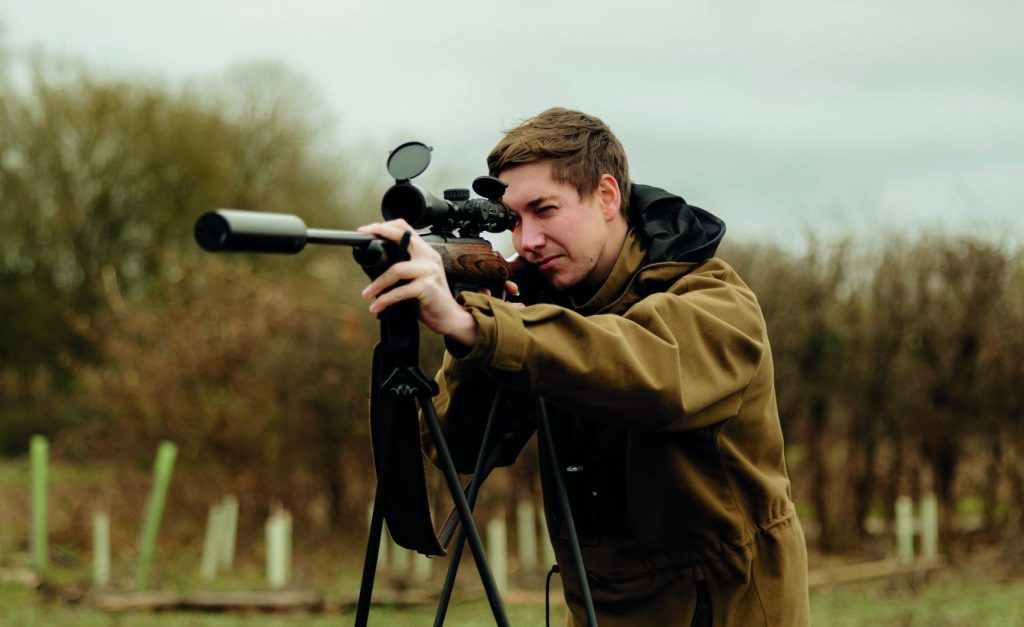Himalayan tahr hunting
In search of true adventure, treading where few have been before, Simon K. Barr battles with a merciless lack of oxygen and the unforgiving terrain of the Himalayas in pursuit of one of the highest-living quarry species on the planet.
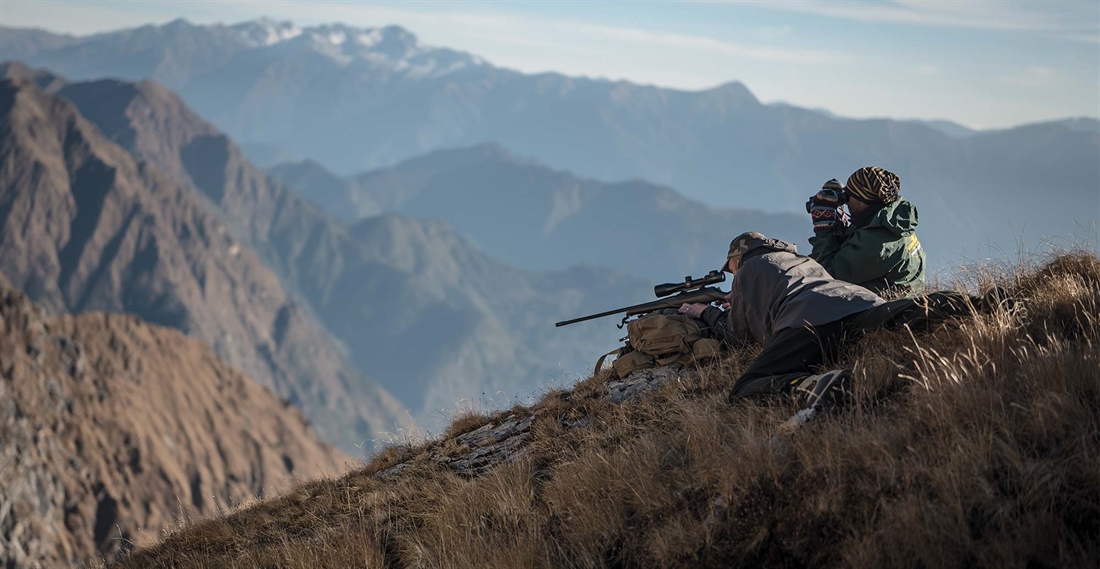
My plan to attempt the highest hunt in the world strangely had its origins in Nebraska, one of the flattest places I have visited. There, at Hornady’s hallowed headquarters, a bizarre-looking creature adorns the wall in the corridor not far from Jason Hornady’s office. It looks like no other caprid or ovide classification. Part goat, part sheep and a demeanour that would have inspired Tolkien. It is a blue sheep – or ‘bharal’ as they are known locally in the Himalayas. This fine example was hunted by Steve Hornady in China, when one could still hunt there. Today, hunting in China is illegal, but this strange creature had inspired me to find the unusual, unclassified and unattainable. Not only did I want to see blue sheep in their natural surroundings, but I wanted a true adventure, to tread where few had been before, to experience the expeditions of our Victorian and Edwardian forefathers and not to follow the hunter tourists’ trail.
The hunting in China closed over a decade ago, but a chance meeting with seasoned Danish big game hunter Jens Kjaer Knudsen, opened my eyes to a different destination for the highest living game species in the world. The Nepalese Himalayas. “It’s a really tough hunt,” Jens had said. “Perhaps the toughest.” And when Jens, a veteran hunter with vast experience of mountainous regions across the world, says that, you know it will be a challenge. However, the fuse was lit, and I started investigating.
There’s little to be found on the subject of hunting in the Himalayas, certainly hardly any reporting of it, and it took some detective work to discover how to go about it. Jens had kindly recommended Global Safaris Nepal, owned and run by the very capable and warm young Nepalese entrepreneur Samsher Parajuli. Even with a recommended outfitter, the trip took two years of planning. A strictly controlled number of animals are hunted in Nepal every year. Only 20 blue sheep and 10 Himalayan tahr tags are sold at auction to national and foreign hunters annually. The price depends on demand with outfitters, so it really is a lottery.
Arriving in Kathmandu, I was joined by Matt Fowler, an extremely fit American hunter who I knew only through an Alaskan guiding acquaintance. We got on immediately; hunting is a universal bonding agent that transcends camo, culture and creed. We both felt as prepared as we could be. I had trained for several months, walking Scottish hills and running five times a week. The space between my thoughts was filled with nerves but more consciously intense excitement. When hunting in Kyrgyzstan for Mid-Asian ibex, I’d suffered from altitude sickness. I knew no matter how fit I was, I was indefensible to the merciless lack of oxygen at the higher reaches of planet earth. I also knew that under any circumstances, mountain hunting is dangerous. In Nepal we would be truly cut off from the outside world, and with tahr to altitudes of 14,000ft, and blue sheep to 18,000ft, there was a lot that could go wrong. However, the reward was more than worth the risk, and the risk is what fills me with cortisol and adrenaline.
We had two days of acclimatisation in Kathmandu, a dusty and busy place. Buddhists and Hindus rub along well together and the atmosphere is friendly. Our first mission was to get our rifles and ammunition cleared – no mean feat in a country where it is illegal to own a rifle. We retrieved our rifles from the airport, then spent much of the day at the Governor of Kathmandu’s offices. In a Monty Python fashion, we were passed from one official’s office to the next, accumulating stamps as we went. After no less than 10 stamps we were finally ushered to the Governor’s office. He did his thing, gave us one last stamp and we were clear to hunt in Nepal.
Kathmandu is all about treading in the footsteps of some of our mightiest and most hallowed explorers, the bravest of the brave, whose epic journeys are so written about. With a day to spare we chartered a plane to take us on a flyby of the tallest peaks of the world: Everest and its towering neighbours. The sight of those ultimate tops, which had seen so many toil over with such grave consequences for failure, filled me with awe. We flew past no fewer than six of the 14 highest mountains in the world – past being the operative word, for their peaks still towered beside us from the window at cruising altitude of 30,000ft – a strange sensation.
The following day, inspired by our Everest experience, we loaded up and headed to the airport where a helicopter would take us west along the Great Himalayan Range. After a Tetris-like pack of equipment, we set off, flying two hours and passing the mighty Annapurna range and two more 25,000ft peaks. To give an idea of distance: trekking to the Dhorpatan Hunting Reserve would have taken seven days, likely more. Landing at 10,000ft was a shock – not least because the reality of being at altitude had kicked in. The air was thin, and breathing was laboured for us, but less so for the team of 22 men who met us at the makeshift helipad – among them sherpas, scouts, guides, cooks, porters and of course, a skinner. Samsher was also with us, as were two government game wardens who would ensure that our hunt was in line with the licences we had been granted.
We’d barely unloaded before the helicopter was full again, carrying any locals who needed medical care back down to Kathmandu; the region we were in had no doctors at all. It was good to think that no matter what the outcome of our hunting expedition, this good deed would come of it. The average life expectancy in the area, Samsher told me, was 50 – a testament to the harsh life of those living at these extreme altitudes, eking out a living from the mountains. While the white peaks towered above us, however, I was surprised by the mildness of the weather, and the vegetation around us. The treeline was still way above us and not what I had anticipated. The area has a temperate climate below the raw rock faces, supporting rhododendrons, spruce, juniper and, of course, plenty of muntjac.
But there was little time to contemplate our surroundings. Once the porters had loaded up, we set off quick-smart, heading downhill. The plan was to spend our first night camping at around 8,500ft to acclimatise before we moved back uphill to start looking for animals. That first day’s walk, which wasn’t all that long, filled me with unease. My lungs burned, my legs ached, and the lactic acid boiled my muscles. No amount of preparation could have readied me for this oxygen-starved challenge. I guiltily watched the porters with their enormous 100lb loads including my camera equipment, that extra sweatshirt I knew I would use strapped to their heads, tripping along as though out for a walk in the park. They seemed totally oblivious to the steepness of the terrain or the thinness of the air as I panted after them, intensely grateful for the trekking poles I’d brought. One thing that did keep me going: a live chicken was part of the load we’d brought with us, a mascot for the first day at least, its destiny likely to be a spicy one.
As we arrived at camp, the fires started and tents were pitched. Our friendly mascot was promptly despatched with a khukuri and prepped for dinner as we zeroed our rifles which, despite the conditions, shot perfectly after some adjustments. As we ate our high-altitude chicken curry, we talked about the mentality of those who’d explored this area, who’d reached the top of the world. Sleep didn’t come easily that night – I was waking every hour, the nerves, excitement and altitude all playing a part.
We started our climb at sun up the following day and had been warned it would be a big push. A big push it was. We climbed – not hiked – 4,000ft in total, my breath wanting and my legs straining at the steepness of the terrain. It was a real battle with myself to keep going, a mind over matter job – but when the mind is plagued by self-doubt and anxiety, that is a tough one.
The terrain was unforgiving. Rocks, bamboo, pines and shrubs blocked our path, and there were no nice plateaus that gave rest to our weary legs. It was uphill all the way to 12,650ft, where we would settle for camp two. By the time we arrived there, nearly 12 hours of climbing behind us, everything ached and burned, and I’ll admit I was concerned and felt emotional. More than half of the climb had taken in terrain that if fallen from would result in certain death. It was exhausting managing this level of risk in one’s mind. What had I let myself in for? Was I mentally up to it? Nausea, headaches and dizziness were plaguing me – a sure sign of altitude sickness. The picture of my two young daughters on the lock screen of my phone haunted my mind’s eye as I curled into a foetal position in the downy folds of my sleeping bag. How reckless was I being? What were my options to pull the plug and get out of this ridiculous scenario I had selfishly gotten myself into?
As 5am arrived the next day, I had an extremely firm word with myself. I had overcome my inner demons, for now. I suspect this inner challenge is something many have to battle with in the Himalayas, and it would not be the last time for me on this trip either.
The sweet and pleasing sound of tahr chirping sweetly echoed around camp as the sky lightened. A large group had fortuitously moved directly above camp during the night. This was unheard of but as the saying goes, success is when an opportunity and preparation meet. The tahr usually live just where the treeline finishes but during the rut, or ‘connection time’ as the guides called it, they move higher. We crept out of our tents, spotting the herd not more than 200m above us, at an angle of 26 degrees up the mountain face. The noise of the awakening camp and movement in readiness for the day ahead stirred the tahr, but they did not run. They moved off quietly now, disappearing around a corner.
I grabbed my Sauer 404 from my tent, quietly loaded, and, following one of the guides, set off climbing to follow the animals. I was intensely relieved when, on rounding the nearest corner, we saw them once more, not far away. After a short stalk, slinking along the edge of a rocky outcrop, now panting from the lack of oxygen and a glut of excitement, we were within a rare 100m of the animals. After a short observation, the head guide Man pointed out a mature male. “This one,” he said. It took a few precious minutes to work out which one that was, their coats merging so well with the tones of the surrounding habitat. The animals were grazing peacefully. I lined up the cross hairs on the animal, tried and struggled to breathe deeply, and squeezed the trigger…
The bull tahr dropped in seconds. Not only had the hunt itself been short, it was close to camp – a huge blessing by all accounts. And even better, the animal lay stone dead not 100m below on a ledge. We retrieved it, and one of the toughest sherpas carried the entire carcass back to camp in a wicker basket. The team were delighted and quickly set to nimbly cutting the beast up with their 12″ khukuri blades, but not before enjoying their special treat of drinking the warm blood of the bull, a mature 12-year-old animal.
The short celebration was finished in moments, and the butchery took little time, too – the meat was secured in a sherpa’s basket and would make up our meals for the next few days. There was no time to tarry, as time was moving fast and we had to make our next camp by nightfall. Another knife-edge, fear-filled five-hour climb, achieving another 2,500ft, took us to camp three where I collapsed, drained of all energy and drained of will. I’d achieved one of my aims, and with the altitude sickness now at a worrying level, perhaps it was time to head home. I felt emotionally and physically weak. There’d be no heading back that night, that much was certain. I decided to give myself another stern talking to, hoping that would be enough to acclimatise and complete my mission. But as I folded my sleeping bag shut around me, I was by no means sure that would be possible.
To be continued…
Related Articles
Get the latest news delivered direct to your door
Subscribe to Fieldsports Journal
Elevate your experience in the field with a subscription to Fieldsports Journal, the premium publication for passionate country sports enthusiasts. This bi-monthly journal delivers unparalleled coverage of game shooting, fishing and big game across the UK and beyond.
Each issue offers a stunning collection of in-depth features, expert opinions and world-class photography, all presented in a timeless yet contemporary design.
Save 10% on shop price when you subscribe, with a choice of packages that work for you. Choose from Print & Digital or Digital only with each journal delivered directly to your door or via the app every other month, plus access to past issues with the digital back issue library.






